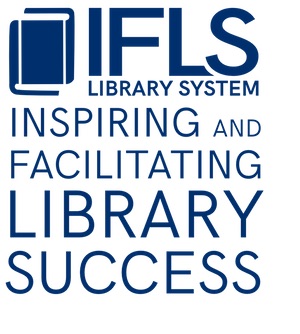Home Delivery and Outreach to Institutions
Can’t find what you’re looking for here? Use this search box to search the IFLS Article Index.
Need help answering specific questions or finding additional resources?
Click on the green HelpDesk button and we’ll make sure the right IFLS staff gets that message right away. Can’t find the green button? Use this email: helpdesk@ifls.lib.wi.us.
There are several models for delivering materials to people who have a hard time leaving their homes, including those living in assisted living, nursing, or senior living facilities. Consider staff capacity, volunteer availability, and the needs and resources of the facilities you are working with when choosing a model.
We’ll start by outlining some general considerations, and then outline some models you could use to create your own service.
General considerations
Start with communicating clear expectations for everyone: library staff, cooperating facility or agency, volunteers, and participants.
Circulation
- Consider how long the lending period will be and how to allow grace time for delays with delivery
- Will you make materials fine-free even if your library charges fines normally?
- How will you handle it if materials go missing? If someone receiving materials dies? Who will be responsible? Will you require replacement costs be paid?
- Do you want to ask for an emergency contact as a way to track down materials if a person has to move to assisted living or passes away?
- Will you request items from other libraries? Make sure you have agreements about:
- Lending period
- Replacement of lost or damaged items
- Whether or not high demand holds can be placed for home delivery patrons
Safety, Transportation, and Logistics
Safety:
- Staff and/or volunteers need to show proof of insurance
- Staff and/or volunteers need to have a background check
- Consider staff and volunteer safety, especially if they are entering peoples’ homes
- COVID protocols and expectations need to be clearly specified for all parties.
What will you use to transport materials? Some ideas:
- Heavy duty bags (with library logo or not)
- Bins
- Collapsible folding wagon
How will you track requests and what has already been checked out?
- With permission, turn on MORE Borrowing History and access it
- Spreadsheets
Application Process and Policies
Will you require participants to register/apply for the program? Policies? Some examples include:
Promotions and Cross-Promotions
- Word of mouth–conversations with library users (including caregivers and relatives), announcements at programs
- Sharing information with local partners: Aging and Disability Resource Centers, local Senior Centers, senior living apartments, and care facilities
- Website, newsletter articles, news releases, and social media can all be effective in promoting the resource to potential participants and their caregivers
Make sure patrons also know about other resources available to them, especially the Wisconsin Talking Book and Braille Library. If they qualify, they can also receive regular mailings of talking books and the equipment to listen to them.
Models
You can mix and match with these models and find what works best your library and community.
Working with Institutions
- Work with Activity Director, if there is one, to set up:
- Rotating browsing deposit collections
- Individual home delivery
- Library events with browsing collection and requests
- Make sure to have clear expectations and agreements with each facility
- Which party will be responsible for transportation of materials?
- Will materials be checked out to the facility or to individuals?
- What happens if materials are lost?
- Consider having more than one contact at the facility, as sometimes turnover causes interruptions in services.
Library staff run
This model is flexible: library staff chooses and delivers materials to individuals OR facilities. Consider:
- Staff safety, especially if staff are expected to enter a home.
- Reimbursement for staff vehicle use or a dedicated library vehicle.
- You should have a policy for off-site staff.
Hybrid Library Staff/Library Volunteer
For many libraries, this model works well for individual home delivery, including delivery to individuals living in nursing homes or other senior living/assisted living facilities or group homes. It could also work for delivery to institutions like nursing homes, but volunteers would need adequate equipment for moving materials (collapsible wagons or carts).
A library staff member:
- Markets the program and takes and processes applications
- Recruits, screens, and manages volunteers
- Selects and checks out materials
Volunteers:
- Pick up materials from the library, deliver, and return to the library
Considerations:
- Volunteers should have both background checks and proof of auto insurance
- Be sure to make expectations clear with volunteers and with participants. For instance, most library home delivery programs focus on delivery of materials, not on developing a social connection or doing other errands.
Hybrid Library Staff/Partner Organization Volunteer or Staff
Some libraries work with other agencies to coordinate volunteers for home delivery. Some suggestions:
- Interfaith Caregivers of Polk County (Amery)
- Meals on Wheels
Main consideration: be clear about expectations and agreements about who is doing what.
Sample Information and Expectations Sheet from Menomonie Public Library
